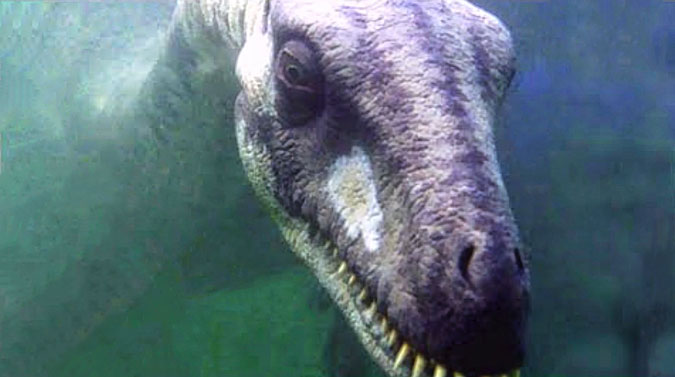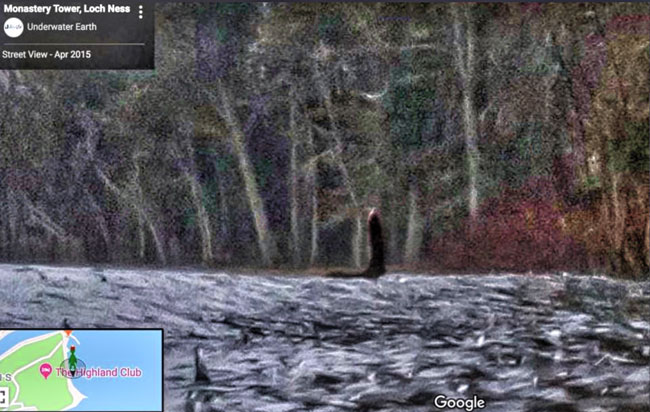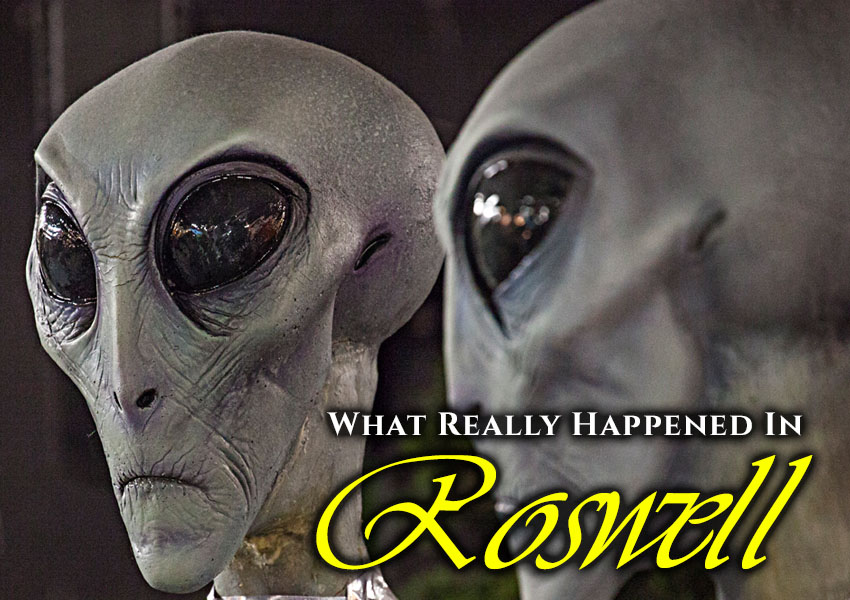Nessie, The Loch Ness Monster
CoverUps.com

The legend of the Loch Ness monster can be traced back to 565 AD, when Saint Columba, a Christian missionary, is said to have banished the murderous water beast to the lake.
2-28---The Loch Ness Monster, affectionately known as Nessie by the locals, is said to live in the large Loch Ness Lake in Scotland. Loch Ness Lake is 22 miles long, about a mile wide, and at its deepest point 950 feet deep. In a nearly inaccessible, remote area up until the early 1930s, the loch is part of the Great Glen which runs like a deep crack running clear across Scotland. A small town, Fort Augustus, is located at the loch's southern end, and the town of Inverness is located at the northern end of the lake.
Nessie has been seen in the Lake for a very long time, it seems. Sightings have been reported in print as early as AD 565 in the manuscript of the Life of St. Columba (vol. 6, book 11, chap 27). It seems that a water monster had bitten to death a man in Loch Ness. St. Columba made a sign of the cross, sending the monster away. In 1871 or 1872, a Dr. D. MacKenzie, who lived in Balnain had seen the Loch Ness monster, described it as resembling an upturned boat, "wriggling and churning up the water."
Nessie first appears in a modern report in the 20th century in July of 1930. Three young men were fishing in a boat out on the lake, close to Dores in the lake's southern portion. Suddenly, 600 yards away, the water became disturbed as a large creature just under the surface was spotted swimming toward them. It turned away about 300 yards from their boat.
In April of 1933, Nessie was seen by Mr. and Mrs. John Mackay as they traveled along the newly made road from a trip to Inverness. In the middle of the lake, they saw a large animal disturbing the water, with two humps which then made a half turn and disappeared.
In fact, in the very warm summers of 1933-34, Nessie was seen quite a lot by people, perhaps due to the heat, which seemed to make the creature less shy. From the 1940s all the way through the '90s, these sightings continued.
In 1960, Torquil MacLeod saw a Nessie almost out of the water. He reported that it was between 40 and 60 feet long, with a long neck similar to an elephant's trunk, and had paddles on the front and back parts of its body.
Another interesting sighting came on June 7, 1974, by monster hunter Frank Serle, when, accompanied by a woman from Quebec, he was approaching a barbed wire fenced area near Foyers, by the beach front. As they walked by, they heard a splashing sound. Peering over the barbed wire, they saw two baby creatures near the shoreline. "They were about two feet long, had dark gray, baby elephant-like skin, fat bodies, long necks, small heads with protruding eyes, and snake-like tails. They each had two stump-like appendages on either side of their bodies." When Serle tried to scale the fence, they scuttled away in a crab-like fashion back into the lake.
The first pictures of the beast were taken by amateur photographers. Near Foyers, Hugh Gray was walking on a bluff, fifty feet above the Loch, when the creature suddenly made an appearance, rising up out of the water about 200 yards away. The startled Gray took pictures of the beast while it was two or three feet above the water. Only one of them came out, and it was a bit blurry because he let the film sit in the camera for two weeks, owing to ambivalent feelings over it. His film did catch the vague, grayish bulk of the creature, but it was not accepted as evidence by the scientific community or zoologists.

The so-called
"surgeon's photo".
He was planning to take pictures of birds, but was in for a surprise when first arriving at this spot, so the story goes. He saw the customary disturbance in the water that is always reported when Nessie makes an appearance. Using a telephoto lens, he managed a clear shot of the "serpentine head," and dinosaur-like neck before it slipped away into the lake once more.
The scientific community declared it a fake, basically an April fool's joke. Many years later another investigator, Tim Dinsdale, made a startling discovery. He found that if one looks closely at the picture, one can see from a distance a faint "concentric circle" of rings around the head of the creature, and if you look closely you can see another circle in the background, indicating the presence of a body just below the surface. In 1972, the photo was enhanced by a NASA computer technician, and whiskers could be seen hanging down from its mouth.
The most successful mission to photograph Nessie was the 1975 expedition sponsored by the Academy of Applied Science, in cooperation with the Loch Ness Phenomena Investigation Bureau. One camera with high speed film activated by sonar was placed on a bottom ledge, 80 feet down in the lake. Another camera hung forty feet below the boat — and a similar distance above the bottom camera — took backup pictures at preset intervals from June 19th to the 20th.
While sonar repeatedly detected large objects near the bottom camera, something had stirred up the silt at the bottom of the notoriously murky Loch, obscuring everything. But the backup camera captured amazing images near the strobe light beam, revealing part of a pinkish body, an upper torso, and the neck and head of a living animal, with two stubby appendages. The most startling image clearly shows an underwater dragon looking at the camera, in half profile, its nostrils visible, with an open mouth and several horn-like projections. After studying several frames of various body segments, experts have estimated that this curious animal has an overall length of 20 feet, an 18-inch neck, a mouth measuring nine by five inches, and six-inch horns set about ten inches apart.
Other clear pictures of the animal were taken by Dr. Robert H. Rines, who led a team of investigators from The Academy of Applied Science at the Massachusetts Institute of Technology, in 1972 and 1975. One of his 1972 pictures shows very clearly an eight-foot-long flipper-like object. A 1975 photograph clearly shows a long-necked creature and its front flipper.
Some in the scientific community, as represented by Roy Mackal, a director of the Loch Ness Investigation Bureau and a professor of Biochemistry at the University of Chicago have concluded that "a population of moderate-sized, piscivorous aquatic animals is inhabiting Loch Ness." In his 1976 book "The Monsters of Loch Ness" he thoroughly examines the evidence of this unknown species of animal with a critical eye, and still comes to this conclusion. Despite this, most in the scientific community remain doubtful of the animal's existence.
There are several theories concerning Nessie. One holds that pictures and accounts show it to be a member of the Plesiosaur order — specifically an Elasmosaur — of the Mesozoic era, supposedly extinct for more than 70 million years.
Another researcher, Ted Holiday, who investigated the loch from 1962 to 1965, concluded in his book "The Great Orm of Loch Ness" that the creature was simply a giant version of the common garden slug, an ancestor of the squid and octopus. A type of "Tullimonstrum gregarium, a creature with the shape of a submarine, with a broad tail." Holiday argued that in ages past they were present all over England, and formed the biological basis for dragon legends.
He also developed another more eccentric theory connecting Loch Ness monsters to black magic. Intrigued by the horror of witnesses of Nessie and similar creatures in Ireland lakes — where it is commonly thought that such animals couldn't possibly survive — he theorized that Nessie-like sightings were merely projections of evil doers who dabbled in the black arts. Toward the end of his life in the early 1970s he wrote two books on the subject: "The Goblin Universe" and "The Dragon and the Disc."
Interestingly, later in their investigations in the late 1980s, Tim Dinsdale and Erik Beckjord — "hunters of unexplained mysteries" — came to believe that Nessie was a paranormal phenomena. Beckjord showed a film he took of the creature, which impressed some who saw it as being a white, shape-shifting thing, and not a reptile."
Meanwhile, Nessie continues to be seen occasionally on the lake, especially when the water is calm, to the delight not only of lucky tourists but also of the local people, who depend on tourism for their economic livelihood. In a more universal sense, Nessie is an unknown animal/creature/cryptid which stimulates the public's sense of wonder and belief in something supernatural, wild, and somewhat dangerous. Most of the evidence suggests, however, that Nessie is "a shy, amiable and quite harmless" creature, that doesn't pose a threat to people.
Nessie, Still In The News
PHOTOGRAPHS
Hover your mouse over the pictures below for captions.





















Loch Ness CoverUp Content Copyright © 1999 to by The Web Network Inc All Rights Reserved
Great CoverUps * Movie CoverUps

BallCaps.com * ChristianMusic.com * HauntedHouses.com * RetirementPartiess.com






























